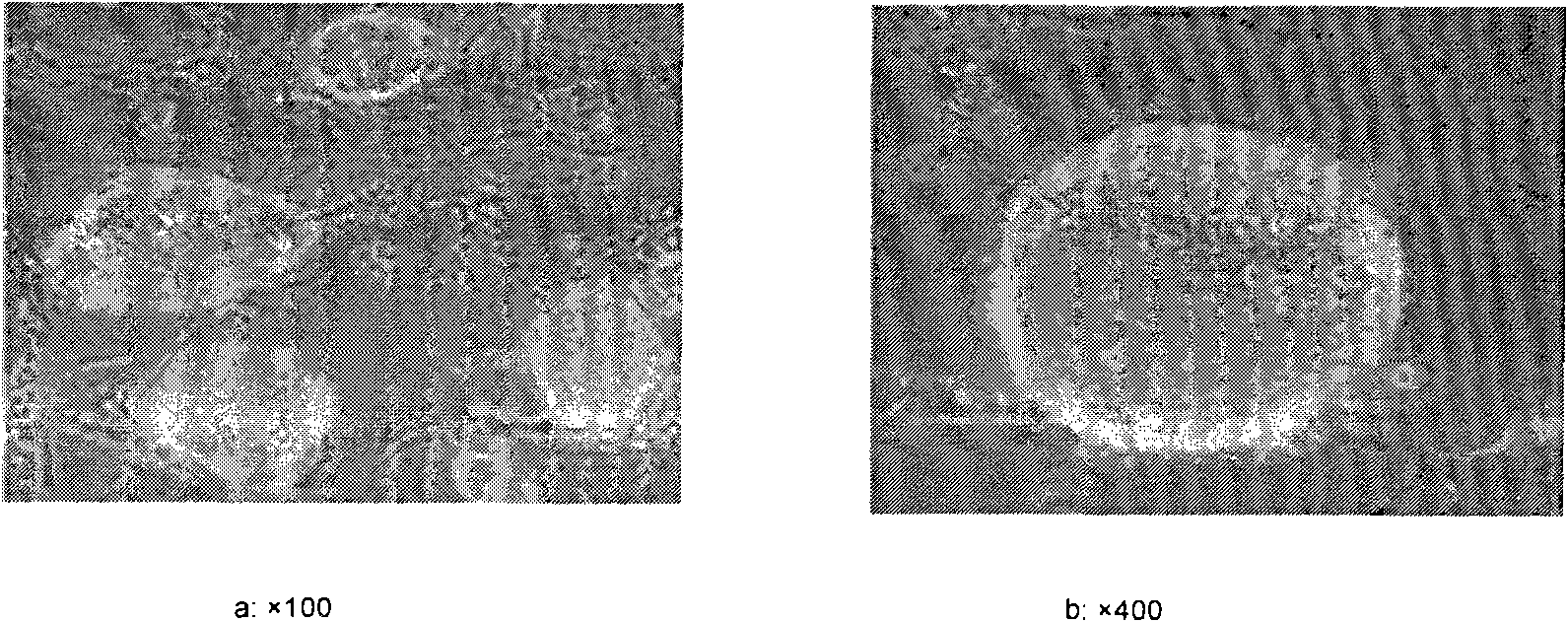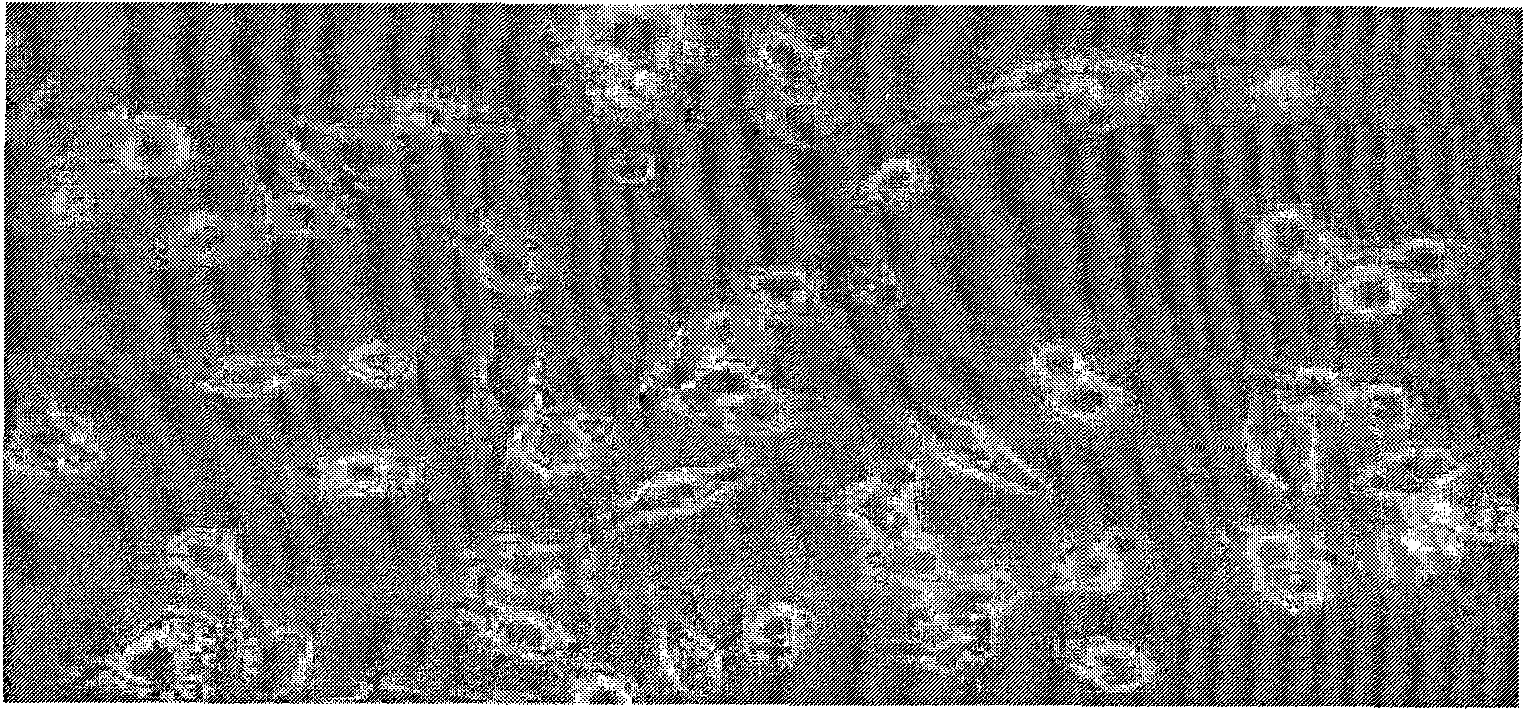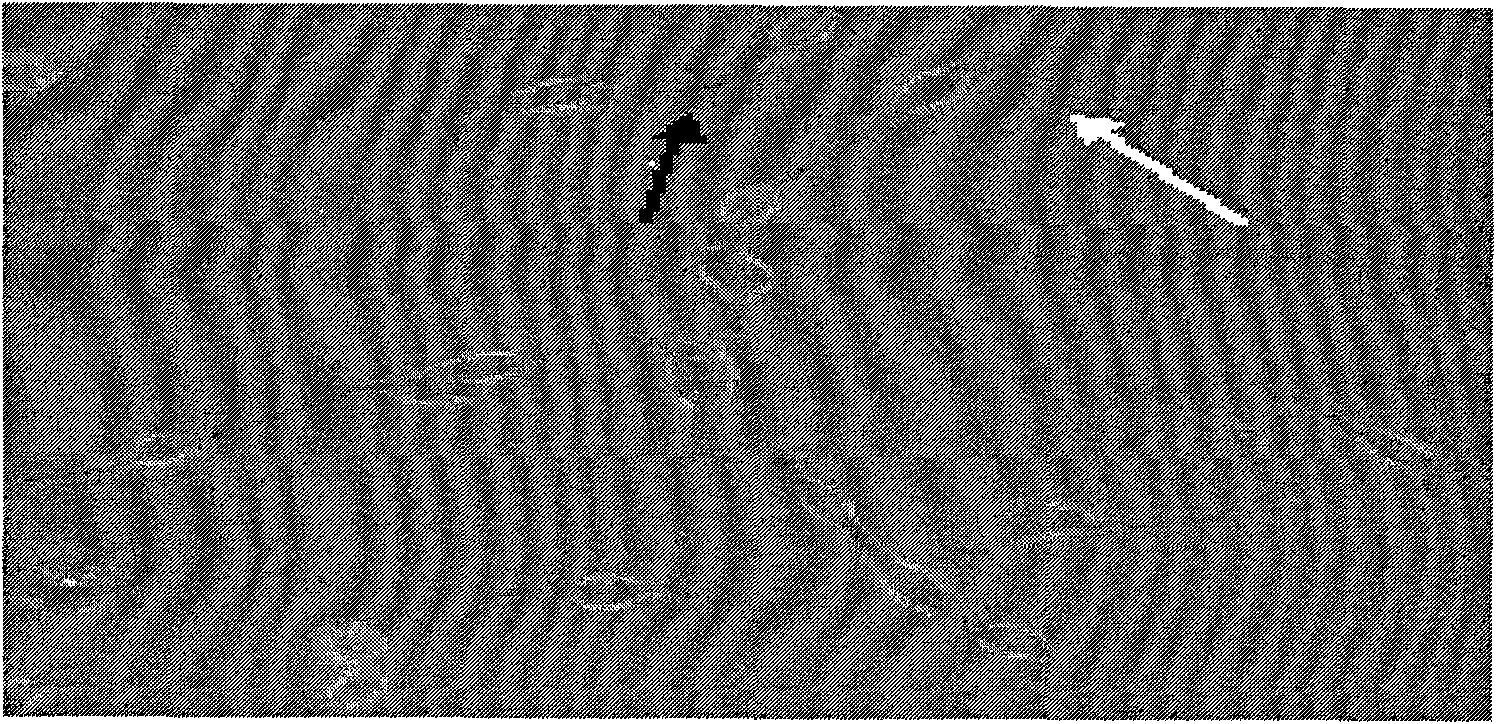Method for inducing mouse embryonic stem cells to differentiate toward nerve cells
A mouse embryo, inducing differentiation technology, applied in embryonic cells, animal cells, germ cells, etc., can solve the problems of difficult control, complicated operation methods, low differentiation ratio, etc., to achieve stable induction effect, simple experimental method, and experimental cycle. short effect
- Summary
- Abstract
- Description
- Claims
- Application Information
AI Technical Summary
Problems solved by technology
Method used
Image
Examples
Embodiment 1
[0026] The method for culturing and inducing differentiation of mouse embryonic stem cells of the present invention comprises the following steps:
[0027] 1. Preparation of feeder layer cells
[0028] Use PMEF as the feeder layer, aseptically take 13.5-day pregnant mouse embryos, remove the head, tail, limbs and viscera, cut into pieces, digest with 0.25% trypsin-EDTA for 30 minutes, apply PMEF culture medium, at 37 ° C, with a volume fraction of 5% CO 2 Cultivate in the environment, cultivate for 8 days, use the second generation PMEF with good proliferation state, add 10mg / L mitomycin C, act for 2.5 hours, wash thoroughly and inoculate in a 75ml culture bottle, the inoculation density is 1.0×10 8 L -1 ;
[0029] 2. Culture of mESCs
[0030] mESCs at 1.0 × 10 8 L -1 Inoculate on the feeder layer cells at a density of 1:4, change the medium every 24 to 48 hours, and passage at a ratio of 1:4 every 3 days, see figure 1 ; when the cells reach 80% confluence, use 0.25% tr...
Embodiment 2
[0034] The method for culturing and inducing differentiation of mouse embryonic stem cells of the present invention comprises the following steps:
[0035] 1. Preparation of feeder layer cells
[0036] Use PMEF as the feeder layer, aseptically take 13.5-day pregnant mouse embryos, remove the head, tail, limbs and viscera, cut them into pieces, digest them with 0.125% trypsin-EDTA for 30 minutes, apply PMEF culture medium, at 37 ° C, with a volume fraction of 5% CO 2 Cultivate in the environment, cultivate for 10 days, use the PMEF with good proliferation status of the 4th generation, add 10mg / L mitomycin C, act for 2.5 hours, wash thoroughly and inoculate in a 75ml culture bottle, the inoculation density is 1.0×10 8 L -1 ;
[0037] 2. mESCs culture
[0038] mESCs at 1.0 × 10 8 L -1 Inoculate on the feeder layer cells at a density of 48 hours, replace the culture medium, discard the non-adherent cells, and change the medium every 4 days according to the growth of the cells....
Embodiment 3
[0042] The method for culturing and inducing differentiation of mouse embryonic stem cells of the present invention comprises the following steps:
[0043] 1. Optimization of induction differentiation conditions of the present invention
[0044] A 6-well culture plate was used for induction, and only one condition was changed each time, and the remaining conditions were kept unchanged. The three experimental conditions of the sequential induction method were optimized: (1) The concentration gradient of fetal bovine serum in the culture medium used for the first inoculation during induction: ①The serum concentration was 10%. ②The serum concentration is 12.5%. ③ serum concentration of 15%. (2) Density gradient of the first inoculation of mESCs during induction: ① inoculation density 1.0×10 10 L -1 . ②Inoculation density 1.0×10 9 L -1 . ③Inoculation density 1.0×10 8 L -1 . ④Inoculation density 1.0×10 7 L -1 . (3) Time gradient for complete replacement with serum-fre...
PUM
 Login to View More
Login to View More Abstract
Description
Claims
Application Information
 Login to View More
Login to View More - R&D
- Intellectual Property
- Life Sciences
- Materials
- Tech Scout
- Unparalleled Data Quality
- Higher Quality Content
- 60% Fewer Hallucinations
Browse by: Latest US Patents, China's latest patents, Technical Efficacy Thesaurus, Application Domain, Technology Topic, Popular Technical Reports.
© 2025 PatSnap. All rights reserved.Legal|Privacy policy|Modern Slavery Act Transparency Statement|Sitemap|About US| Contact US: help@patsnap.com



